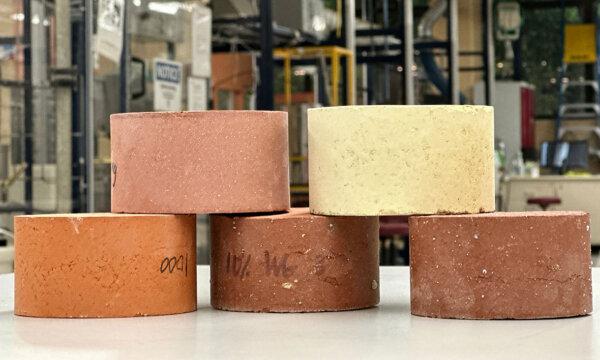Reducing Power Usage by Building with Energy-Efficient Smart Bricks
The smart bricks have insulation properties and may provide up to a 5 percent saving in energy costs for a single-story building.
A groundbreaking type of brick made from glass and combusted solid waste, with superior insulation properties compared to traditional clay bricks, has the potential to reduce manufacturing and household energy expenses while decreasing waste sent to landfills.
Engineers from RMIT University and recycling company Visy have collaborated to create these innovative “smart bricks” that could significantly enhance the energy efficiency of buildings, promoting a more sustainable construction environment.
These smart bricks exceed clay bricks in insulation properties, offering a potential energy cost savings of up to 5 percent for single-story buildings. Moreover, they require 20 percent less heat during the firing process, leading to a reduction in the manufacturing temperature.
Published in the international journal Construction and Building Materials, the study reveals that these bricks consist of at least 15 percent waste glass and 20 percent combusted solid waste (ash).
Associate Professor Dilan Robert, the leader of the research team, highlighted the possibility of minimizing the production of 1.4 trillion bricks used globally each year by utilizing waste materials.
He emphasized, “Business-as-usual brick production emits harmful emissions like carbon dioxide, sulphur dioxide, and chlorine, putting a strain on natural resources, particularly clay.”
Construction projects often generate a significant amount of waste, including damaged, leftover, or removed bricks during renovations or demolitions, contributing to the waste stream and landfills if not managed properly.
Efforts to minimize brick wastage and handle it sustainably can lead to a more eco-friendly construction economy.
Mr. Robert stated, “Bricks are essential in preventing energy loss from buildings,” noting the possibility of producing cosmetic alternatives to suit house designs.
“By modifying our formulations, we can create lightweight bricks in various colors, from white to dark red.”

The bricks also comply with structural safety standards, as confirmed by Biplob Pramanik, the team’s environmental engineer, who mentioned that they meet state environmental regulations.
Prior to this innovation, Visy had only been repurposing waste glass packaging into bottles and jars.
Paul Andrich, Visy’s Innovation Project Manager, stated, “By diverting this waste into bricks with added insulation rather than sending it to landfills, we are contributing to the circular economy.”
One challenge lies in utilizing glass fragments smaller than 3 millimeters in conventional recycling processes, but Mr. Robert expressed confidence that a focus on productivity could resolve these issues.
He added, “We aim to enhance the production process scale to enable the commercialization of our innovative bricks in partnership with brick manufacturers in Melbourne.”
Smartbricks in a Developing Market
In recent years, scientists and environmental researchers have explored bricks’ potential to retain heat for sustainable construction and home building applications.
In the United States, researchers have developed bricks that can store electricity by circulating gases through conventional brick pores. These gases interact with the brick’s chemicals and coat it with a conducting plastic nanofiber known as PEDOT, transforming the brick into a supercapacitor capable of storing energy for a limited period.




